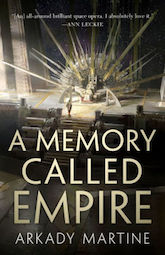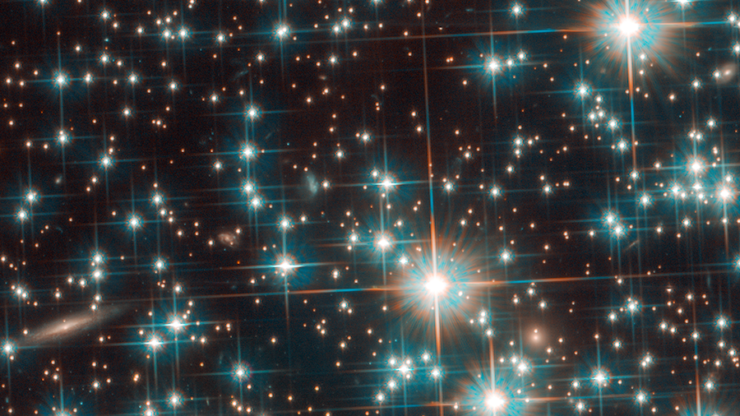A recent discussion here on Tor.com, one which mentioned C. J. Cherryh’s starmap, reminded me of a few remarkable roleplaying games (one of which was reviewed here ages ago). Remarkable because they were fun to play; notable in this context because each game wrestled with a then-intractable problem: user-friendly starmaps.
When you read a novel, short story, etc., you may be given hints as to star locations and the distances from star to star. Most of us just take those vague gestures at maps as given and focus on the exciting space battles, palace intrigues, and so on. Only a few nerdy readers (ahem!) try to work out star positions and distances from the text. And only a few authors (like Benford and McCarthy) provide maps in their novels. There are reasons why maps are generally left out, and who notices an absence?
Roleplaying games (RPGs), on the other hand, have to give the players maps (unless all the action takes place in one stellar system). If you are plotting a course to Procyon A, you need to know just where it is and how long it will take to get there. Game companies have experimented with several approaches to the mapping problem; most are unsatisfactory.
The problem is twofold: there are a lot of stars in the galaxy, and at least on the small scales typical of most games, they are arrayed in all three dimensions. If all game developers have is printed material (words, tables, 2D maps) to map the sphere of action, then their choices are:
- skimp on detail;
- generalize inaccurately;
- focus on a fraction (a small fraction) of the galaxy.
A scene in one of Poul Anderson’s Flandry novels (exactly which one I have been unable to track down) gives an idea of the scale of the issue: The protagonist notices a small defect on one face of a coin—a face of the coin with an image of the Milky Way. The defect, almost too small to see on the coin, covers an area of the coin that, were it to erase that area in real life, would take out the vast polity the protagonist calls home.
Imperium, the second board game I ever bought (inspiration for the name of my old store Imperiums to Order), and Traveller (the second roleplaying game I ever played) opted for starmaps that were two-dimensional, easy to read, and wildly inaccurate.
The Milky Way in our neighbourhood might be a comparatively thin disk, but the joker there is the word “comparatively”—it’s still a thousand light-years thick, and a thousand light-years is much, much larger than the average distance between stars.
Furthermore, planes (2D) scale as the square of the linear dimensions while volumes (3D) scale as the cube. On the Traveller maps, not only are the relative positions of known stars wrong, but there are many fewer systems than there should be, given the distances involved. The Third Imperium has 11,000 worlds across distances that would in a 3D map have billions of stars.
Buy the Book


A Memory Called Empire
But (and this really mattered back in the days when game-masters were likely to be limited to paper, pen, and calculators) the Traveller mapping solution is easy to grasp and use. It only takes an hour or two to generate a sub-sector of space and players can easily understand the relative positions of worlds at a glance. It may not be accurate, but it’s extremely user-friendly.
Of course, game designers were well aware that space is 3D. SPI (Simulations Publications Inc.) designer Redmond Simonsen seems to have taken this as a personal challenge. His work in 1974 StarForce: Alpha Centauri offered a 3D presentation of the stars within twenty or so light-years of Earth. It used a flat map and various keys to let the players know how far above or below the plane of the map each system was located. Simple geometry and a couple of moments with a slide-rule would reveal the distance between any two stars.
In March 1981, SPI’s RPG Universe delivered an even more ambitious map: all of the stars within thirty light-years of the Sun (or at least all that were known at the time). Universe came with a very pretty fold-out paper map and a handy book of tables. It wasn’t really an SPI game if it didn’t come with a stack of tabular data; Universe more than delivered. Still, as pretty as the map was, it wasn’t as user-friendly as the Traveller solution.
For various reasons that might be diplomatically described as “impressively catastrophic business decisions,” SPI did not survive long enough to make more games using the Universe setting. Perhaps if they had, GMs and players would have been scared off by the increased complexity of the map. Or perhaps they would have embraced it. I am inclined to think it would have been the first, and the reason for that involves a major player in the field, Game Design Workshop (GDW, not to be confused with Games Workshop).
Some years after SPI was abruptly taken off life-support, GDW decided to revisit science fiction RPGs. In 1986, the misleadingly titled Traveller: 2300 enticed players with an entirely new continuity unrelated to the even then venerable Traveller setting. Quickly renamed 2300 AD when the first title proved confusing to GDW’s customers, the game came with a map of the stars within fifty light years of the Sun. To put it a different way, the map covered a volume almost five times that of Universe’s and about fifteen times as large as StarForce’s. Lamentably, the 2300 map was not designed as elegantly as the Universe map (eyeballing the Z coordinates of each star was, as I recall, impossible). To compensate, the game came with a thick booklet with an alphabetical listing of every star on the map. In the long, long ago of 1986, it was an astounding resource.
It covered just about one hundred millionth of the galaxy.
Each increase in scale rendered 3D maps even more difficult to use. Long before the map covered even a small fraction of the Milky Way, the challenge became intractable. Or at least, it is intractable if one is struggling with paper maps and tables, plus calculators. We live in a marvellous world where all of this work can be off-loaded onto computers, which are more than happy to keep track of a great many objects for us. A modern game designer or hard SF author who wanted a highly detailed map could begin by obtaining a copy of the Hipparcos and Gaia data; more reasonably, they could turn to the ever useful Atomic Rockets site for pointers. There’s no reason a modern-day Cherryh or Anderson couldn’t conveniently chart an interstellar community spanning billions of systems..at which point the problem becomes knowing about any specific system.
How one might present that to readers is an interesting question. I mentioned that Benford and McCarthy included maps in their books. Those maps were of the nearest stars, thus even more limited than the maps included with Starforce. Cramming a star map into an RPG booklet is nothing compared to trying to fit it on a single page. At least in ebooks, one could provide a link.
Synchronicity is an interesting thing. After I wrote the first draft of this I discovered that Paul Drye (author of False Steps: The Space Race as It Might Have Been) is working on a project tentatively called “Atlas of the Nearby Stars.” I will be very interested to see the results….
There is, of course, an entirely different solution—one that 2300 also used, and which appears in a number of popular novels and RPGs. Alas, I am out of space. Stay tuned…
In the words of Wikipedia editor TexasAndroid, prolific book reviewer and perennial Darwin Award nomineeJames Davis Nicoll is of “questionable notability.” His work has appeared in Publishers Weekly and Romantic Times as well as on his own websites, James Nicoll Reviews and Young People Read Old SFF (where he is assisted by editor Karen Lofstrom and web person Adrienne L. Travis). He is surprisingly flammable.










